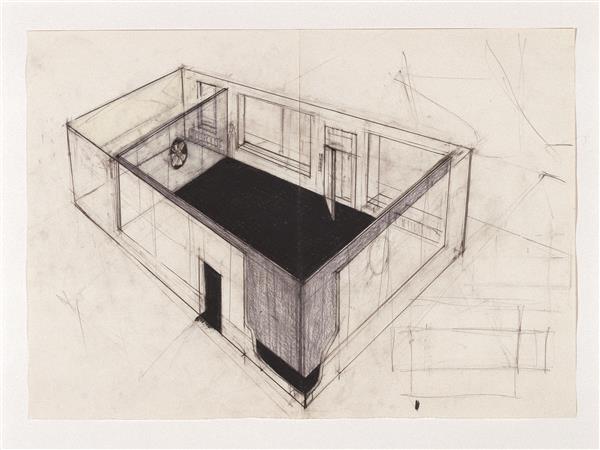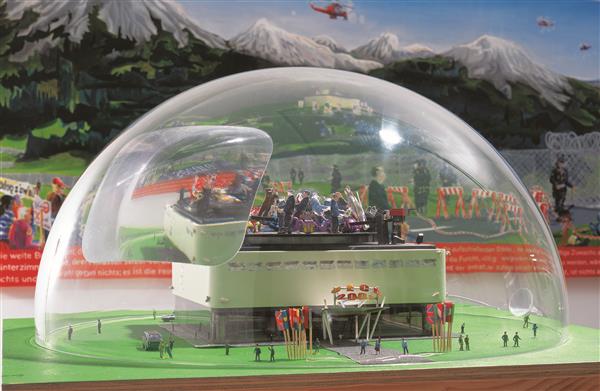Untitled (Hypermoral)
Róza El-Hassan
paper, pencil and India ink
63 × 49 cm (framed)
2001–2002
Acquisition 2012
Inv. No. 0244
To integrate the most important graphic aspects in Róza El-Hassan’s oeuvre into the collection, the EVN acquired three paper works from different work phases. Two of the artist’s sculptures that joined the collection eleven years ago are part of the series R. Thinking/Dreaming about Overpopulation, which had its origin in the Kosovo war. Over the years, these sculptures have been reprocessed though various media and techniques. The female figures squatting on the ground convey decidedly political questions. Feminism, identity, social problems and their confrontation are central themes in Róza El-Hassanʼs work.
The small-format collage, created between 2001 and 2002, refers directly to the sculpture R. Thinking/Dreaming about Overpopulation I. The artist cut a black chador out of a copy of the sculpture; without the fabric, only an outline remains, leaving the orange balloon floating like a placenta in space.
Untitled (Hypermoral) emerged from a phase of graphic abstraction where the works were often combined with single words or phrases. A more decided material interaction with paper as raw material and formative element plays a role - a thorny, gloomy work with continuous fields of color in dark tones and hastily applied lettering. Applied strips of paper cover the watercolored background like the black bars of a censor. Is the overarching moral addressed alluding to societyʼs contradictory use of morality or is this more in the sense of Georges Bataille and the fluctuating border between good and evil?
The third piece broaches the issue of the unbearable war in Syria, to which Róza El-Hassan, who has Syrian roots, reacts with heightened personal engagement. One sees irregular concentric circles, island-like forms, a peace symbol in brilliant colors in a central position. The work was created in May, 2012; in the same month, the UN-peace plan was terminated and since then, heavy fighting has convulsed the country. The name Orontes in the title refers to the river Nahr al-Asi, which flows through Lebanon, Syria and Turkey. A number of archaeological sites along the river became the victim of destruction or pillaging. In light of the continuing humanitarian catastrophe, these occurrences are peripheral, however they reveal, once more, the overwhelmingly barbaric face of war.
Heike Maier-Rieper, 2015 (translation: Virginia Dellenbaugh)
Continue readingPublications
evn collection. 95–2015 Jubilee, Vienna 2015, p. 122–127

